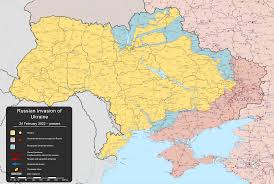
Introduction
The Donbas region, comprising the eastern Ukrainian provinces of Donetsk and Luhansk, has been at the heart of a protracted conflict since 2014. The importance of Donbas extends beyond its geographical location; it is a focal point of geopolitical tensions between Ukraine and Russia, with deep historical and cultural roots. As international attention remains fixed on the war and its implications, understanding the current state of the Donbas region is crucial for discerning the broader context of European security.
Background of the Conflict
The conflict in Donbas began in April 2014 after Russia’s annexation of Crimea, leading to armed confrontations between Ukrainian forces and Russian-backed separatists. The region has witnessed heavy fighting, causing thousands of deaths and displacing millions. Ceasefires have been attempted but have often been met with violation and renewed hostilities, making any long-term resolution elusive.
Current Developments
In recent months, the situation in Donbas has seen significant escalations. Reports indicate an increase in military activity, particularly around key cities such as Bakhmut and Severodonetsk. Both the Ukrainian army and pro-Russian forces have bolstered their positions in preparation for possible offensives. The international community, particularly the European Union and NATO, continues to express concern over the increased tensions, reiterating support for Ukraine while advocating for diplomatic resolutions.
Humanitarian Impact
The ongoing conflict has had dire humanitarian consequences for the civilian population. According to the United Nations, more than 3.8 million people in the Donbas area require humanitarian assistance, with access to basic necessities such as food, water, and medical care severely hindered by ongoing hostilities. Aid agencies struggle to reach those in need due to continuous fighting, making the situation increasingly dire for those living in the conflict zone.
Conclusion
The Donbas region remains a significant point of conflict with enormous implications not only for Ukraine but for European stability and international relations. As the conflict continues, the potential for escalation raises alarms across global platforms. Observers predict that without concerted and sustained diplomatic efforts, the region may see further turmoil, prolonging the humanitarian crisis and exacerbating geopolitical tensions in Eastern Europe. The international community must remain vigilant and proactive in seeking peaceful resolutions to this enduring conflict, as the residents of Donbas continue to bear the brunt of the ongoing hostilities.
You may also like

Key Developments and Current Events in Iran

The Darkness: Current Events and Musical Journey
